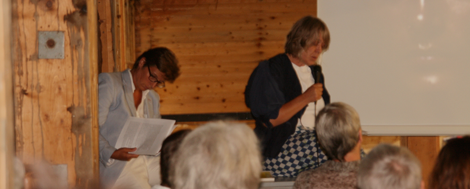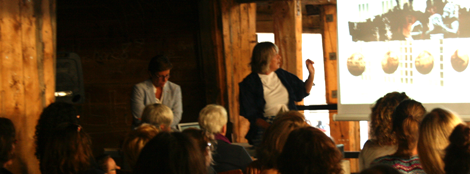| « Guided to the Future by Spirits | Kiefer quarry, Fürstenbrunn - guided tour » |
New paths to an old history
When travelling Peru and Bolivia two years ago, Ines Doujak and Catrin Seefranz didn’t just collect whatever rare textiles they could find. They went to look for the deeper story literally woven into the textiles, as indigenous tribes used woven cloth to record their history, mythology and everyday life before the arrival of the conquistadores. Colonialism ended up pushing indigenous women into textile making, often as tribute to the Spanish crown, whereas before it had been freely practiced. In those times, pieces of cloth, much more precious than the sum of their threads, disappeared over the ocean to end up on display in some museum, never to be seen again by their weavers. Ines Doujak and Catrin Seefranz try very hard to get away from this colonial outlook, they record the stories around the cloths, find out about their sacred nature ("They belong to the ancestors and must not be cut or harmed in any way", as they find out from one woman) and plan on incorporating all kinds of people in the second part of their project due to start this fall.
On the outskirts of Vienna, they plan what they call "the eccentric archive", where they will invite scientists, anthropologists, artists, specialists on textiles and Latin America, also some of the people they met while travelling there, to look through all of the gathered materials, "or rediscover them", as Ines Doujak says. They don’t want to store everything away like a classical archive does, but newly interpret these pieces. "We know we cause a lot of questions and critique, and we have to be careful how we do things, but a lot happens as we go along so we can never plan that well." is how Catrin Seefranz sums it. I wish them best of luck with their endeavor and hope to one day see their archive.



